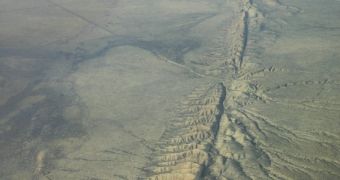According to a new study by investigators at the Swiss Federal Institute of Technology (ETH) in Zürich, Switzerland, it would appear that Earth's tectonic plates needed around 1 billion years to fully develop, partially driven by a process similar to modern-day subduction. These plates are giant slabs of rock that float atop our planet's molten mantle and that connect to each other via fault lines.
Since these interlocking slabs of crust are not static, they constantly slam and grind against each other, triggering volcanic and seismic activities along their boundaries. Geologists have long since wondered about how these plates emerged on our planet, back when Earth was still very young. Some studies have suggested that the tectonic plate system developed around 3 billion years ago.
The ETH team argues in a new paper – published in the April 6 issue of the top scientific journal Nature – that the process which eventually led to tectonic plate formation began around 4 billion years ago. At first, this process was very similar to subduction, a phenomenon occurring today where one tectonic plate continuously slides under another.
In the distant past, cooler parts of our planet's crusts may have submerged under the warmer parts. This process would have damaged and weakened the surrounding crust, experts argue. After many reiterations of the same phenomenon, the weak areas would have eventually formed plate boundaries, setting the stage for the emergence of the modern tectonic plate system, Nature News reports.
According to ETH geophysicist Paul Tackley, studying the exact origins and development of these plates is extremely difficult. After the original system was set in place, subsequent motions recycled much of Earth's crust, erasing any geological signs that could have supported one theory or another.
Geologists recently gained access to a series of evidence supporting the conclusions of the new study. For example, the Jack Hills in western Australia have revealed minerals that are roughly 4 billion years old, the oldest rocks ever discovered on our planet. Analyses of these samples have revealed that these minerals could have only formed under conditions characteristic of subduction.
“They produce a model that plausibly explains what we see,” comments petrologist Michael Brown, from the University of Maryland in College Park, who was not a part of the study. The group's “theory of the mechanism underlying plate formation is “the first interesting example of how it might have occurred,” adds University of Texas in Dallas geologist, Robert Stern.
“We’ve got a physical mechanism to explain how it could have happened,” says David Bercovici, who holds an appointment as a geophysicist at the Yale University in New Haven, Connecticut. The expert was also a coauthor of the new Nature paper.

 14 DAY TRIAL //
14 DAY TRIAL //